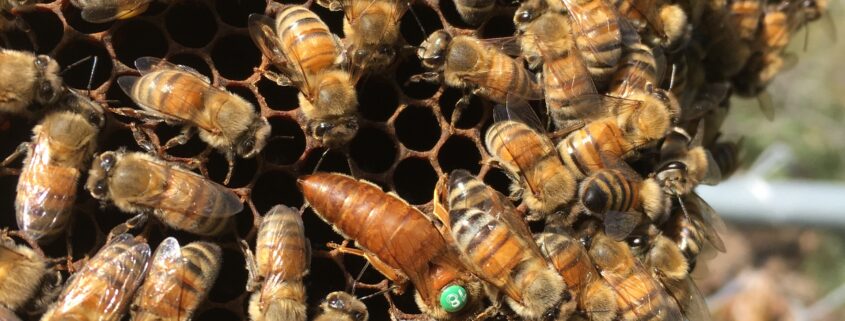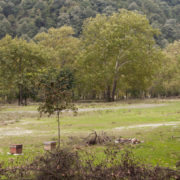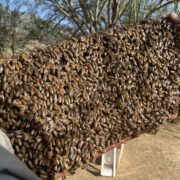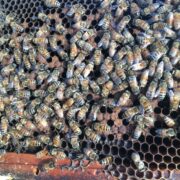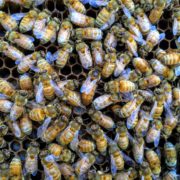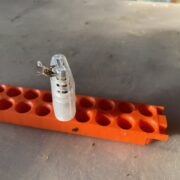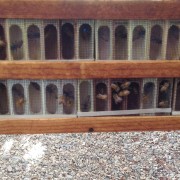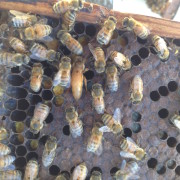Spring Requeening
Although there are advantages to requeening a colony in the summer or fall, traditionally, beekeepers requeen colonies in the spring. One of the best reasons to requeen early in the season is to prevent swarming. Spring requeening reduces a colony’s tendency to swarm because, generally, colonies with very young queens tend to settle in with their new queen. It is older queens that are more likely to swarm. Why? Perhaps the new and young queen’s powerful pheromones signal the colony to keep her in place. Also, the requeening can distract a colony from swarming—at least while the new queen is being accepted.
A distinct advantage of installing a new queen in the spring is that a young queen brings enthusiastic and youthful energy into the hive at the very start of the season. This recipe for vigorous egg-laying leads to large population growth before the honey flows down the road. It’s perfect timing. This also means that the colony’s population should stay considerably large heading into the later part of the year and winter.
Besides the bees themselves, beekeepers who requeen in the spring also gain some advantages from this timing. Early in the season, colony populations are generally smaller, making it easier to locate the old queen. Also, if a new honey flow is just starting, the bees will tend to be on their best behavior and not as apt to behave defensively. During a honey flow, adult bees get locked into foraging. A colony will put up with a lot of beekeeper activity during a honey flow. The bees are focused on foraging and colony growth and are less apt to sting.
However, there are a couple of downsides to requeening in the spring. The first is that spring weather can be turbulent, meaning that rainy and cool weather can damper a beekeeper’s ability to work the bees. A preordered queen’s date may not match the ideal weather for opening and work with a colony. Summer weather, in general, is more stable. Running into adverse weather can also actually affect queen acceptance. If a new queen is introduced right before a long spell of inclement weather, the bees could go hungry and agitated, hampering the acceptance of the new queen.
Another downside to spring requeening is the possibility of additional queens or queens-in-the-making in the hive during requeening. Beekeepers who requeen in spring, like all beekeepers, should always be on the lookout for natural queen cells during the requeening process. These natural queen cells are more apt to be present during the spring than any other season and must be eliminated while requeening. One or more new and feisty virgin queens emerging from one of these queen cells is the last thing that a beekeeper wants to see during requeening. No one wants a newly purchased and precious queen having to deal with a battle royale before she even gets started!

